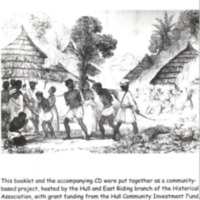
Songs of Slavery
The Songs of Slavery CD and booklet were produced by a community-based project, led by the Hull and East Riding branch of the Historical Association. The project was part of the Wilberforce 2007 initiative in Hull. Songs of Slavery recorded 19 songs relating to slavery, alongside six short narratives. Most of the songs date from the mid-19th century and were originally composed and sung by enslaved peoples. Some were based on religious beliefs, others also contained coded messages to aid escape and resistance. The Songs of Slavery tracks were sung or narrated by local choirs, singers and musicians, together with students from local schools and colleges.
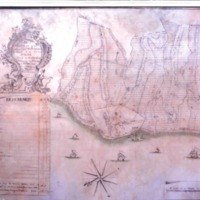
From Slavery to Freedom: Grenada to Paxton
Paxton House in Berwickshire was once owned by Ninian Home, the owner of two sugar plantations on the island of Grenada. The Wedderburn Papers, part of the house archives, contain some 2,000 documents relating to the Grenada properties between the 1760s and the 1840s. In 2007, the Paxton Trust began a project to digitise and increase access to all the documents relating to Grenada (including correspondence between Grenada and Paxton, plus documents relating to the plantations and their enslaved workers). A booklet and exhibition was also organised, and links were made with a youth group based in Acton, London, most members of which are of Grenadian descent. The Wedderburn Papers are held at the National Archives of Scotland.
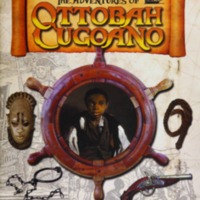
The Adventures of Ottobah Cugoano
The Adventures of Ottobah Cugoano is a book written for young readers, written by Marcia Hutchinson and Pete Tidy, and published by Primary Colours as part of the Freedom and Culture 2007 initiative. Ottobah Cugoanao was an African abolitionist, captured in 1770 in Fante (present-day Ghana) and sold into slavery. He was eventually made free and baptized John Stuart in London. Stuart became active in Sons in Africa and through his publications campaigned for abolition. A Key Stage 2 and Key Stage 3 Teaching Pack was produced to accompany the adventure story, written by Marcia Hutchinson, Pete Tidy and Shazia Azhar, with a foreword by David Lammy MP.
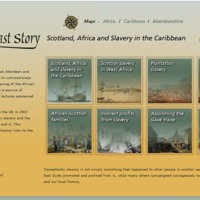
A North East Story: Scotland, Africa and Slavery in the Caribbean
This online exhibition and learning resource linking the history of transatlantic slavery to North East Scotland was organised by an Aberdeen and Aberdeenshire Bicentenary Committee, including representatives from Aberdeenshire Council, Aberdeen City Council, the University of Aberdeen, the Robert Gordon University and the African and African-Caribbean communities. It followed on from a service of commemoration and a series of public lectures sponsored by the Committee in 2007. The exhibition logo is inspired by the mythical Sankofa bird, a cultural symbol of the Akan-speaking peoples of Ghana in West Africa. Featured here are a number of resources available to download from the North East Story website.
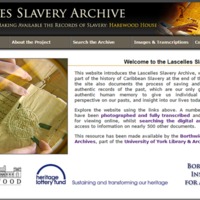
Lascelles Slavery Archive
The Lascelles Slavery Archive was a collaborative project between the Borthwick Institute for Archives and Harewood House Trust to conserve, preserve and make available records relating to slavery from the archives of the Lascelles family of Harewood House, Yorkshire. The project deals with a new discovery of papers relating to the family's fortune based on its estates in the West Indies. Key documents providing evidence for the acquisition of the family's wealth, once thought lost, were found in poor condition during an inventory of Harewood House. The Lascelles Slavery Archive is available through the Borthwick's searchrooms as an online resource, and represents an important section of the larger archive of the Lascelles family held by West Yorkshire Archive Service.
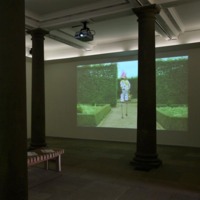
Crop Over
2007 saw a number of different projects taking place at Harewood House in West Yorkshire, home of the Lascelles family. The bicentenary was used as an opportunity to explore the family connections with the transatlantic slave trade and the sugar plantations of the West Indies.
The art installation Crop Over by British Afro-Caribbean artist Sonia Boyce was shown in the public galleries at Harewood House throughout 2007. Crop Over is a Barbadian festival which has evolved from a celebration by plantation slaves of the end of the sugar crop. Sonia Boyce's two-screen film visually depicts the traditions, histories and cultural practices of this festival, which culminates with a carnivalesque parade known as Kadooment. It also responds to the history of Harewood House. The Lascelles family association with Barbados began in the 17th century when Edward Lascelles and his son Daniel were based in Bridgetown, Barbados.
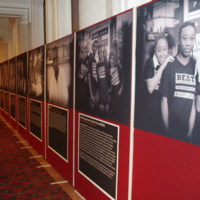
Freedom Roads
The Freedom Roads exhibition at Guildhall Art Gallery was one of several initiatives led by London Metropolitan Archives to mark the bicentenary. The exhibition featured contemporary photographic portraits of people of African origin whose work has contributed to the continuing struggle for human rights in different fields. Colin Prescod, Shirley Thompson, Eric and Jessica Huntley and Rudolph Walker were amongst the individuals featured. Others like the young people from BEAT (Black Experience Archive Trust) were engaged in a project to find out about significant people in their local community. Each person was photographed with an image of an object or place which has a special significance to them. The other part of the exhibition focused on relevant archival materials held by London Metropolitan Archives, including the South African Bill of Rights and a copy of the Constitution signed by Nelson Mandela, Cyril Ramaphosa, F. W. De Klerk and Roelf Meyer. Other material relating to slavery and abolition included a letter from John Julius, a plantation owner on the island of St. Kitts.
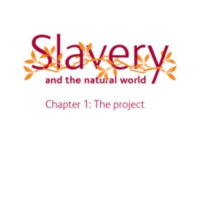
Slavery and the Natural World
In consultation with local community groups, in 2007 the Natural History Museum commissioned new research into its collections that link slavery and the natural world. The research uncovered experiences of enslaved people and the use of plants in their everyday life, as food, medicines and poisons. It also examined the complex relationships between enslaved people and naturalists exploring newly-colonised lands. The museum ran a series of public events, co-hosted by Race on the Agenda, which aimed to bring the historical, scientific and public viewpoints together. It created online educational resources on themes such as Commercial Plants, Everyday Life, Diet and Nutrition, and Resistance. The museum also developed cross-curricular ideas for school lessons in Science using the context of slavery, looking at foods across different cultures, for example.
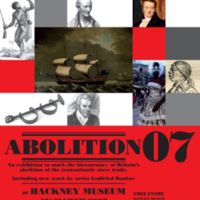
Abolition 07
Hackney Museum's Abolition 07 exhibition told the story of British involvement in the transatlantic slave trade, the resistance to it, and its abolition, and in particular emphasised the involvement of Hackney's residents in the abolition movement. The display included new artwork by Godfried Donkor in collaboration with young Hackney artists. A film of interviews with Hackney residents, Hear My Voice, was produced. Over 1200 children from Hackney Primary Schools took part in poetry workshops at the museum with poets Adisa and Baden Prince. Their poems and responses were published in the booklet 'And Still I Rise'.
The research into Hackney's connections to the transatlantic slave trade continued in 2013-2015 with 'Local Roots / Global Routes', a collaborative project between Hackney Museum and Archives and the Legacies of British Slave-ownership project.
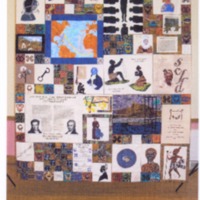
In Stitches
The In Stitches project was led by the African Families Foundation (TAFF) and brought together British, African and African-Caribbean women's quilting groups meeting in London, Liverpool, Bristol, Manchester and Birmingham. The In Stitches Quilt, designed by Janice Gunner, included 60 squares of embroidered images, texts and symbols, depicting historic figures, scenes and artefacts associated with the transatlantic slave trade and its abolition. The Quilt used several of the Adinkra symbols from Africa, originally printed on fabrics worn at funerals by the Akan peoples of Ghana. The accompanying work pack was designed to support learning about slavery based on the four themes of the Quilt: Capture, the Middle Passage, Life in the 'New World', and Proscription of Slavery. The Quilt was unveiled at City Hall in London, and then toured to the British Empire and Commonwealth Museum (Bristol), Central Library (Liverpool), Soho House (Birmingham), the International Quilt Festival (Birmingham) and Central Library (Manchester).
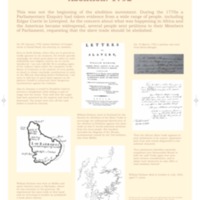
Dumfries and Galloway and the Transatlantic Slave Trade
An exhibition exploring the connections between the Scottish region of Dumfries and Galloway and the transatlantic slave trade toured Dumfries Museum, the Stewartry Museum in Kirkcudbright and Stranraer Museum. At each venue, the exhibition was accompanied by displays of material and a lecture. The catalogue of new research to supplement the exhibition by Frances Wilkins set out to correct misunderstandings about the role of people from the region in the transatlantic slave trade, to prove a history of connections independent of Glasgow or anywhere else. Evidence suggests that men from smaller towns such as Dumfries and Kirkcudbright were involved in the transatlantic slave trade as merchants, slave traders or plantation owners. For example, in the late 18th century, plantation supplies were sent from Kirkcudbright to the island of Grenada; the vessels returned with rum, sugar, and cotton wool.
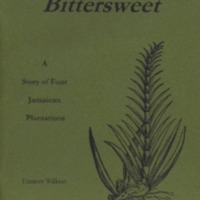
Bittersweet
The Bittersweet exhibition was held during the summer of 2007 at Tissington Hall, Derbyshire, home of the FitzHerbert family since the 17th century. The exhibition and accompanying booklet by Frances Wilkins describe life, work and slavery on four Jamaican sugar plantations inherited by the FitzHerbert family in the 18th century - Blue Mountain, Forrest, Grange Hill and Vere, plus the coffee plantation of Retrieve Mountain - and subsequently managed from Tissington Hall. Research of the FitzHerbert papers held at Derbyshire Record Office revealed evidence about the lives of the enslaved and the overseers, the sugar production process and the connections to plantation owners in England. The exhibition was housed at Tissington during 2007 and then was available on loan to other houses in Derbyshire and to local schools. The exhibition coincided with Tissington’s annual Well Dressing celebrations. The special 2007 design to commemorate the bicentenary was by Wendy Greatorex (photographer Glyn Williams). Tissington Hall was one of several member houses of the Historic Houses Association to mark the bicentenary.

'Irreconcilable with the principles of justice and humanity': the trade in slaves and its abolition
An exhibition held in the Special Collections Gallery at the Hartley Library, University of Southampton. The exhibition took a broad view of the subject of transatlantic slavery across the 18th and 19th centuries, featuring accounts of the horrors of the transatlantic slave trade, the case for abolition, and contemporary tracts and pamphlets putting forward the arguments for total abolition. Alongside these were discussions of the place of slavery in the economy of the West Indies, and the detail of measures taken by governments, such as that of the first Duke of Wellington in 1828-30, and the work of the third Viscount Palmerston, as Foreign Secretary and Prime Minister. The exhibition also looked at the efforts of the Royal Navy to enforce legislation and treaties against slave trading.
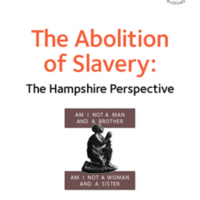
The Abolition of Slavery: The Hampshire Perspective
A touring exhibition exploring Hampshire's links with slave ownership and the abolition campaign was produced by (and featured material from) Hampshire Museums and Archives Service and Hampshire Record Office. The exhibition was on show in the Record Office foyer, before travelling to museums, schools and community centres around the county. The exhibition revealed that there were slave owners living in places in Hampshire such as the village of Hurstbourne Tarrant, and told the story of a slave-trading voyage in 1700 led and financed by men from the Titchfield area. Black servants, very likely former slaves, could be found in unlikely places such as Martyr Worthy and Bramdean. The abolition campaign was fought in the columns of the Hampshire Chronicle and the Hampshire Telegraph, and communities as diverse as Portsmouth, Whitchurch and Fordingbridge sent in petitions to Parliament on the subject. The exhibition also mentioned white slaves taken from the English coast by Barbary pirates, and the testimony of a group of emancipated slaves from Cuba who arrived in Southampton in 1855 on their way to Lucomi in Africa.
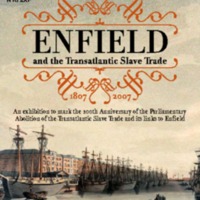
Enfield and the Transatlantic Slave Trade
An exhibition to mark the bicentenary was developed by Enfield Museum Service in partnership with the British Museum and Enfield Racial Equality Council. The exhibition looked at West African culture, the development of the local African community, the links between the transatlantic slave trade and Enfield, wealthy landowners and Quaker abolitionists who lived in the area. Free family days held during school vacations offered traditional Ghanaian story-telling, dancing and drumming, crafts and object handling. Living History Days gave visitors the opportunity to meet actors portraying William Wilberforce and Olaudah Equiano. School workshops included a drama session and performance about a runaway slave developed from material from Lambeth Archive. The museum service also produced a book, edited by Valerie Munday, which explored further the links between Enfield and the slave trade. The book was sent to all schools in the borough, and formed the basis of a teaching resource aimed at Key Stages 2 and 3. Loan boxes and handling collections provided by the museum service include Ghanaian artefacts and items relating to the slave trade. In 2011, Enfield Racial Equality Council unveiled a plaque to commemorate abolition at the Enfield Civic Centre.
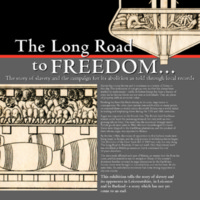
The Long Road to Freedom
As made clear by The Long Road to Freedom exhibition in 2007, the Record Office for Leicestershire, Leicester & Rutland contains a significant collection of documents which reveal local connections with the slave trade, and with those who campaigned for abolition. Several prominent local families owned slaves on plantations in the Caribbean and on the north coast of South America. Leading Leicester abolitionists, Elizabeth Heyrick and Susanna Watts, orchestrated a vigorous anti-slavery campaign in Leicester, including a boycott on sugar. Local landowner, Thomas Babington of Rothley Temple, was a friend of William Wilberforce and hosted meetings of anti-slavery campaigners at his home. The exhibition also highlighted a unique collection of mid-19th century papers which provide access to the voices of the enslaved in a slave court in Lagos, West Africa. It also told the stories of two former slaves, Rasselas Morjan and Edward Juba, who came to Leicestershire with their owners. This exhibition toured to various venues in the region, including Abbey Pumping Station, where it coincided with family activities focused on the work of Elizabeth Heyrick.
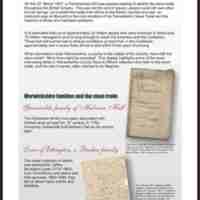
Slavery: A Warwickshire Connection?
An exhibition exploring the connections between Warwickshire and the transatlantic slave trade, using the collections held at Warwickshire Record Office. Several Warwickshire families owned plantations in the Caribbean, such as the Greatheed family of Guy's Cliffe who owned an estate in St Kitts. Vice Admiral Lord Hugh Seymour was prominent in the West Indies as Commander of Britain's naval forces in the Leeward and Windward Islands. Church of England parish registers reveal the presence of black people in Warwickshire's history.
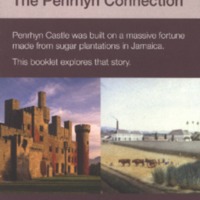
Sugar and Slavery - The Penrhyn Connection
Penrhyn Castle on the outskirts of Bangor in Wales is owned by the National Trust. In 2007, the bicentenary was marked with a special exhibition and accompanying events exploring the connections between the Castle and the fortune of its former owners, the Pennant family, built on Jamaican sugar from one of the largest estates on the island. The exhibition featured the story of Richard Pennant, 1st Lord Penrhyn, a wealthy merchant and MP for Liverpool who fought against abolition in Parliament. Some of the research was carried out by members of the local community, who were trained in archival research by exploring the Penrhyn Jamaica papers held at Bangor University, which included Richard Pennant's letters as absentee landowner.
The project created links between a local school near the Castle, Banks Road school in Liverpool and Mavisville school in Kingston, Jamaica. All three schools provided art, prose and poetry to the exhibition. Workshops were held for all visiting schools. Accompanying events included art days where a local artist worked with visitors to explore the meaning of landscape painting in the context of slavery; a Caribbean weekend; and a day of activities and workshops with a multi-faith groups of teenagers from Liverpool. A DVD of all the information gathered was given free to schools and libraries.
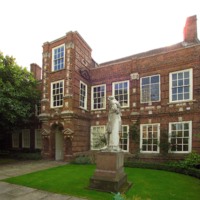
Wilberforce House Museum Re-opening
Wilberforce House Museum re-opened in 2007 after a significant redevelopment. In 1907 the 17th century building, and William Wilberforce’s birthplace and home in Hull’s Old Town, became Britain's first museum of the history of slavery. In 2007, the museum was fully refurbished with new displays. Some of these showcased existing collections, including those relating to the life of their famous patron, the slave trade and plantation life. Other displays engaged with themes considered absent from former interpretations, including the wider abolition movement. Another significant new feature was the inclusion of two galleries relating to modern slavery and human rights. These exhibits drew attention to local and global issues, with objects donated by members of the local community and contemporary antislavery campaign groups.
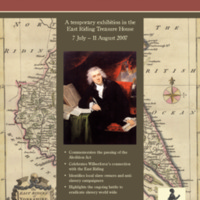
William Wilberforce, Slavery and the East Riding
Alongside commemorating the passing of the 1807 Abolition Act, the ‘William Wilberforce, Slavery and the East Riding’ exhibition at the Treasure House in Beverley also highlighted Wilberforce’s connections with the East Riding of Yorkshire. The exhibition traced the roots of the Wilberforce family back to the early 13th century, and narrated the story of William Wilberforce’s early life in a family of merchants, and later, his significant contributions to the abolition campaign. It also looked at the other links between the East Riding and slavery, in the family fortunes of the Beverley family and Watt family, founded on ownership of slave plantations, but also the anti-slavery societies established in the region. The exhibition ended by highlighting the plight of the millions of people still enslaved across the world today, and discussed some of the contemporary antislavery efforts.